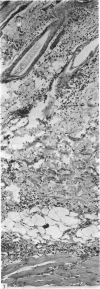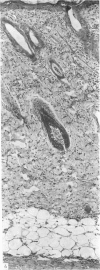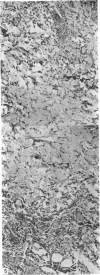Abstract
Donor guinea-pigs were immunized with antigen in Freund's complete adjuvant. Three weeks later these donor guinea-pigs showed strong delayed hypersensitivity to the antigen. Peritoneal exudate cells (macrophages) and serum were then transferred intravenously from the immunized donors to normal recipients. Good 24-hour skin reactions were obtained in the recipients which had received cells and serum from donors immunized with bovine serum albumin, γ-globulin, ovalbumin and haemocyanin. The reaction transferred by immune cells and serum was greater than the reaction transferred by either singly. This synergy was not found with PPD or blood group substance as antigen. Good transfers of 24-hour skin reactions to PPD were obtained with peritoneal exudate cells both alone and with serum. Good transfers could not be obtained with blood group substance.
The synergic action of cells and serum in the passive transfer of 24-hour skin reactions was specific. The ability of peritoneal exudate cells to transfer 24-hour skin reactions was present at 1 week and greater at 3 weeks. In contrast the ability of serum to enhance passive transfers was absent at 1 week and present at 2 and 3 weeks.
The histology of reactions passively transferred by spleen, lymph node and peritoneal exudate cells in the presence and absence of serum was studied. Serum alone produced a predominantly polymorphonuclear infiltrate which was maximal at 18–24 hours and almost absent at 48 hours. Cells alone produced only a very slight reaction. The combination of cells and serum produced lesions at 4 and 18 hours resembling those caused by serum alone. At 24 hours however the histiocytes and lymphocytes were more numerous than in the pure serum reaction and by 48 hours the infiltrate consisted of histiocytes and lymphocytes.
It was concluded that, with certain antigens, there is a synergic effect of immune cells and serum in the passive transfer of 24-hour skin reactions and reasons are given for considering that these passively transferred 24-hour skin reactions are indeed delayed hypersensitivity reactions.
Full text
PDF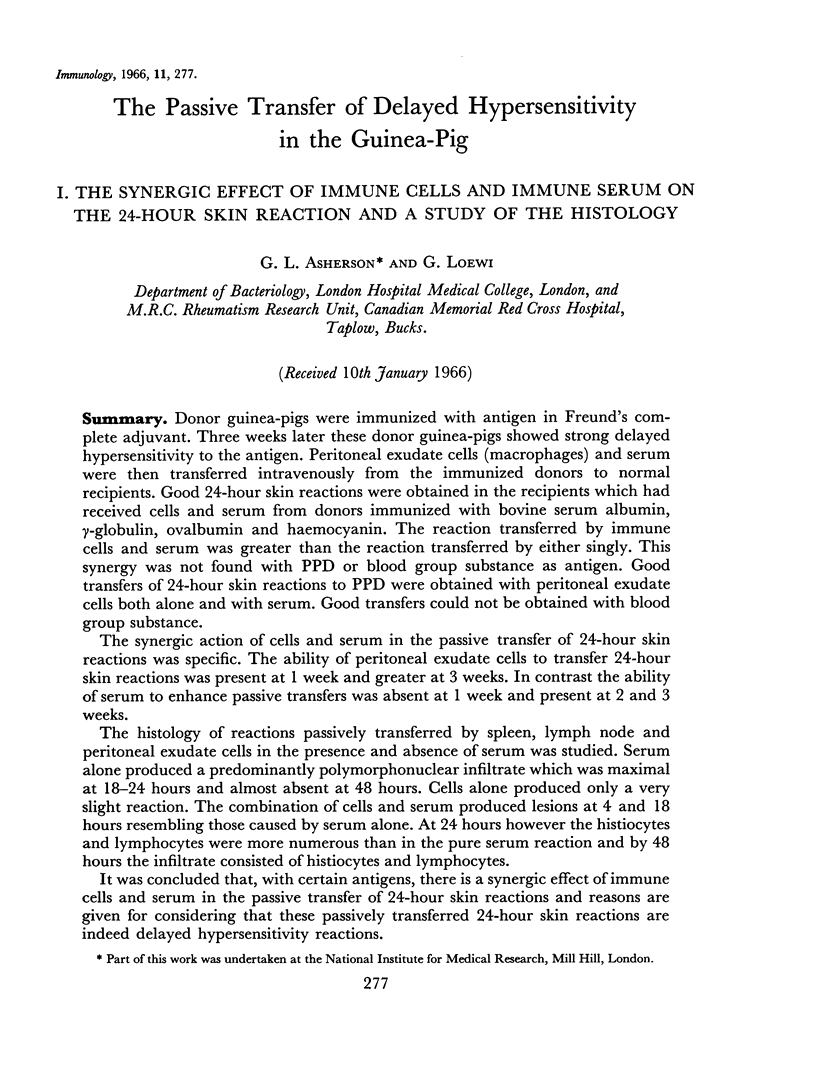
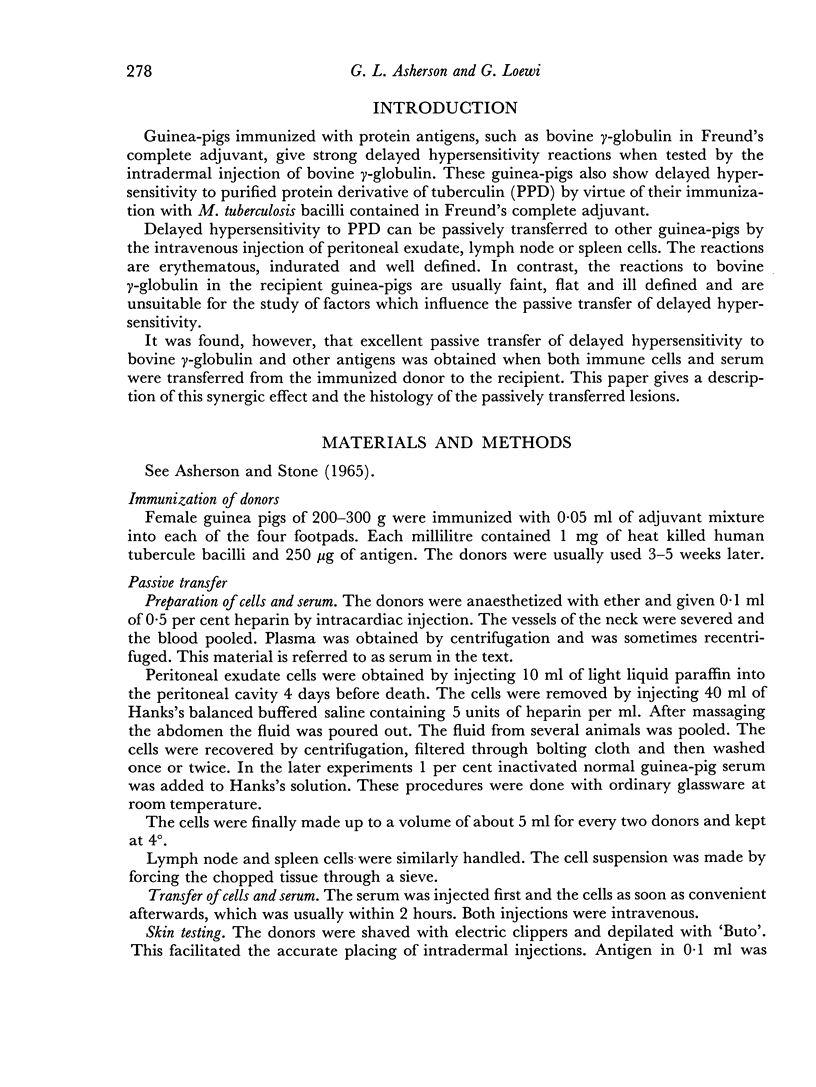
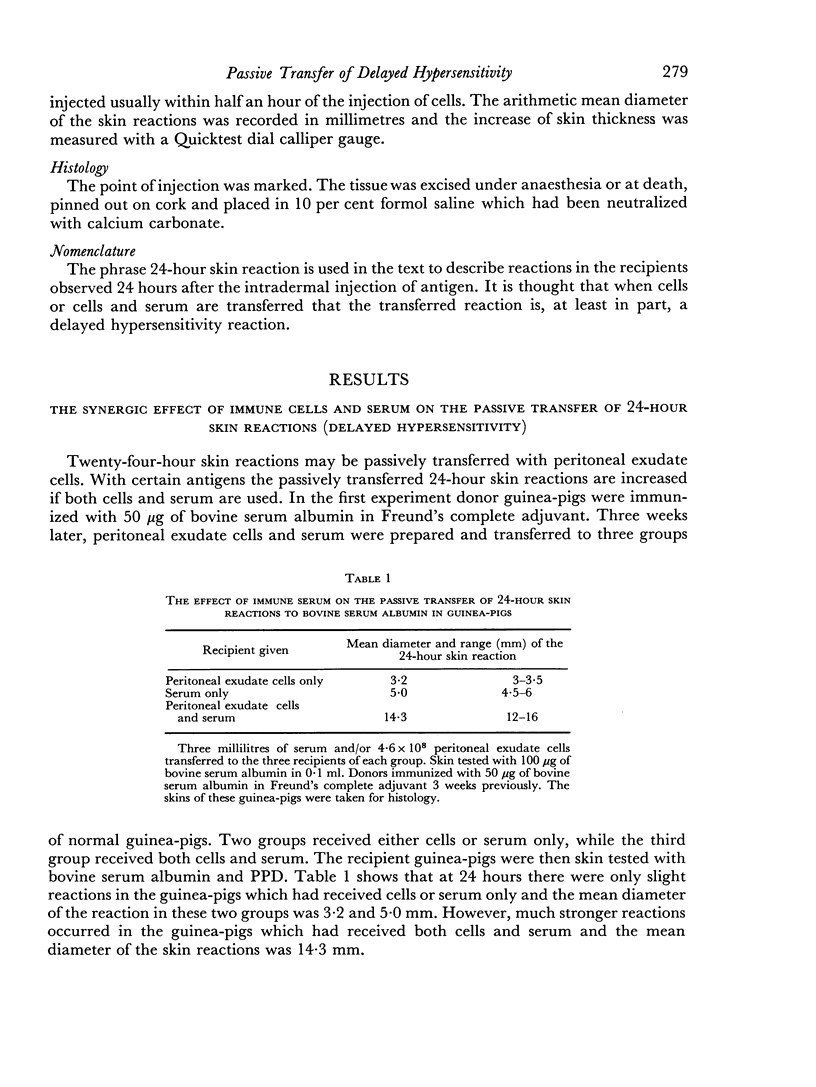
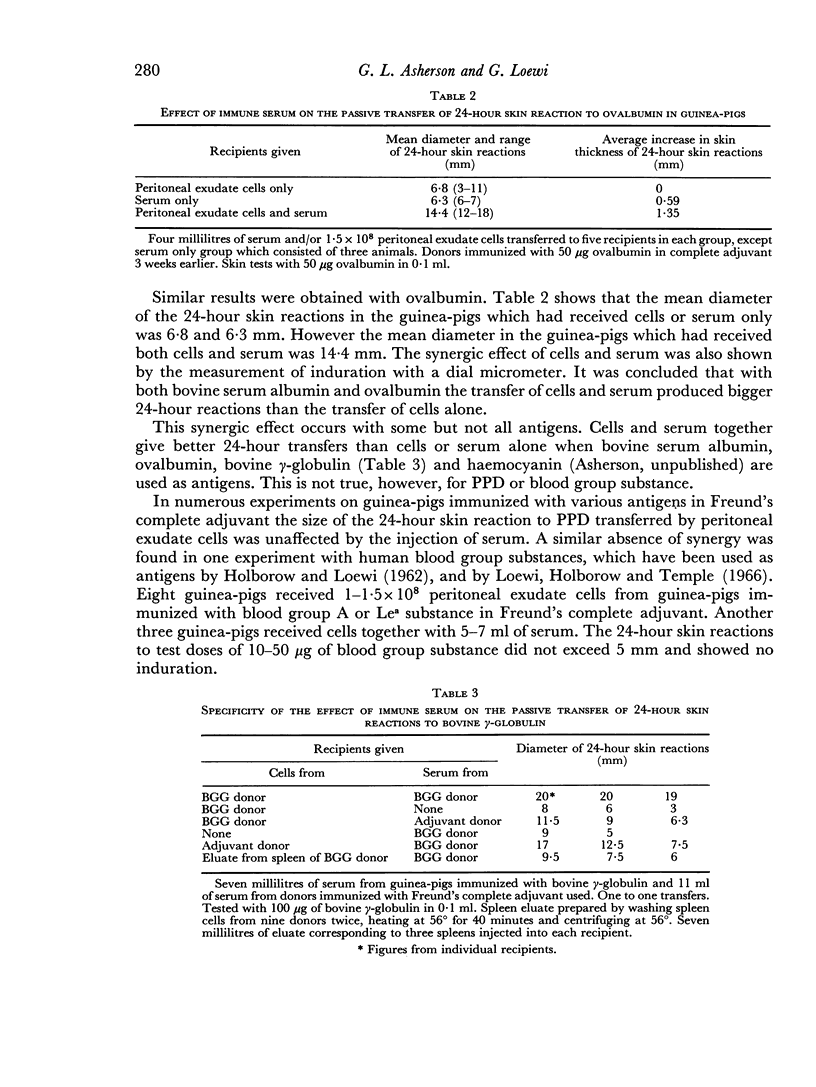
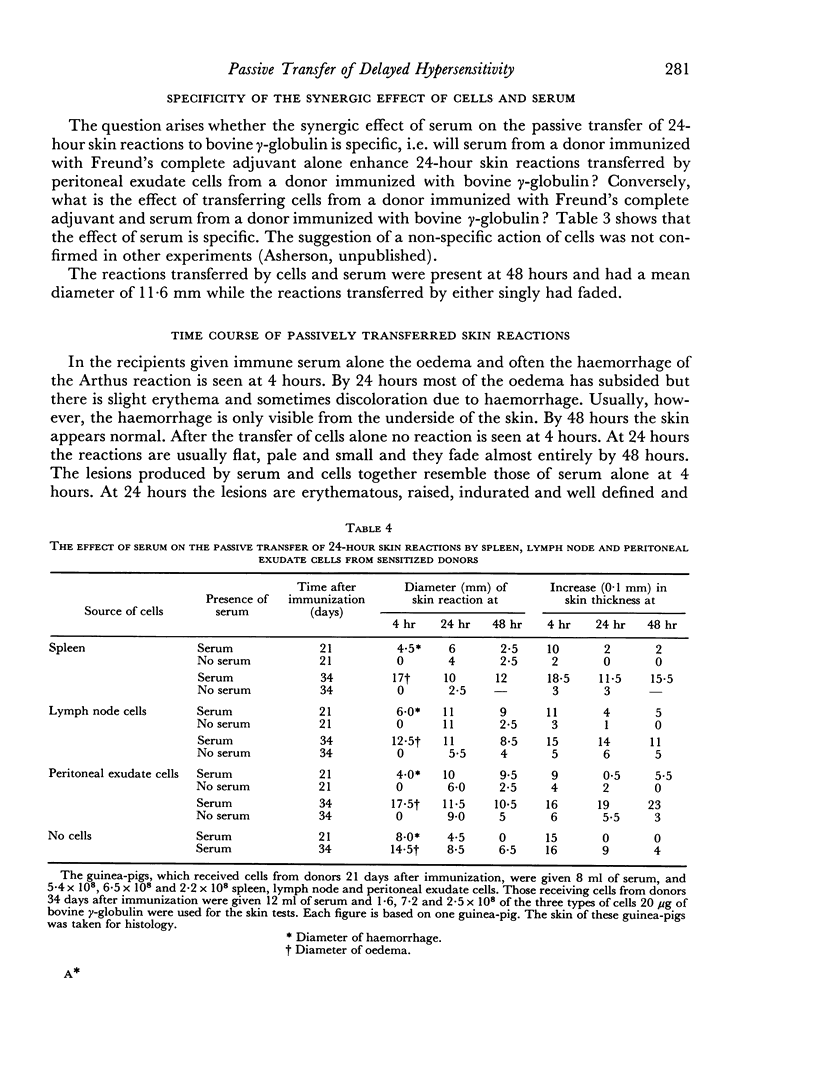
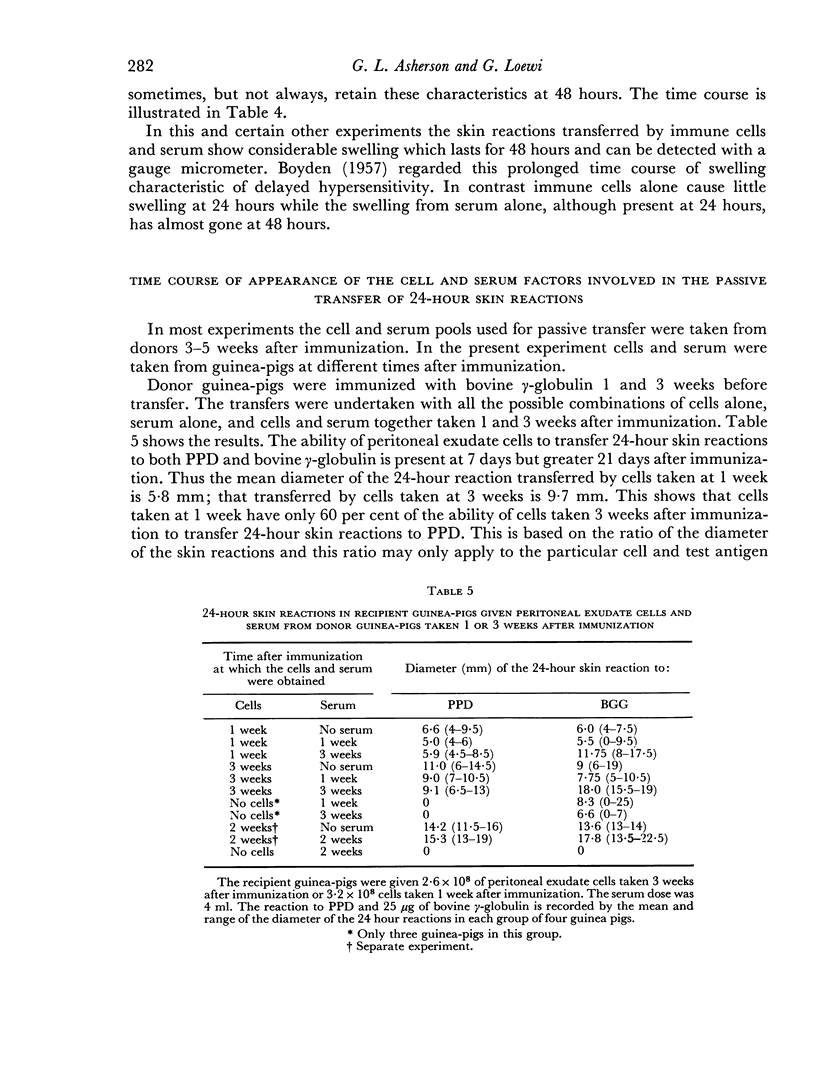
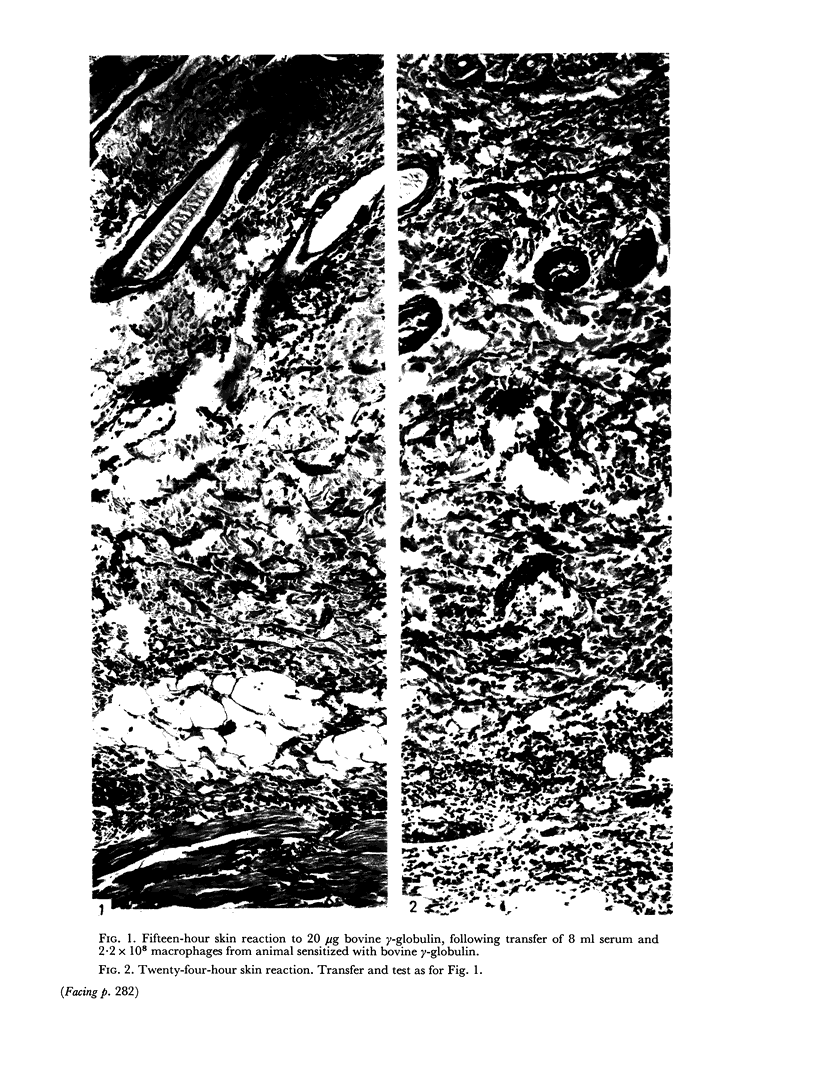
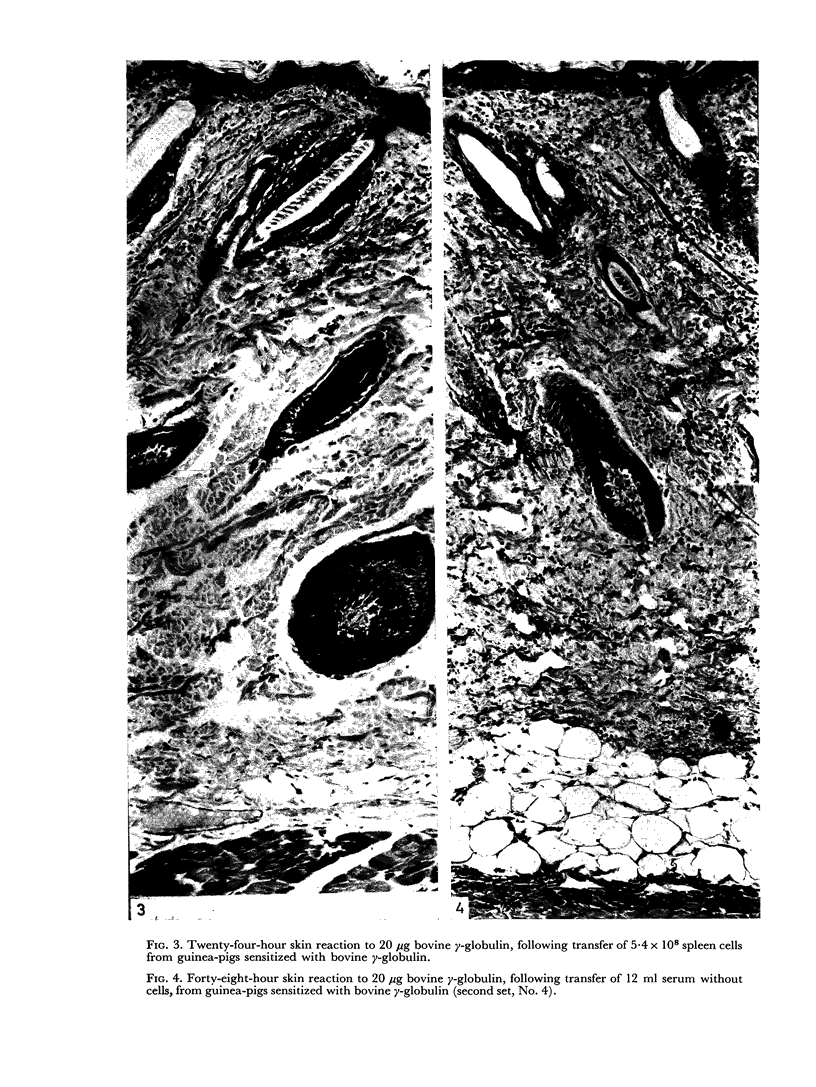


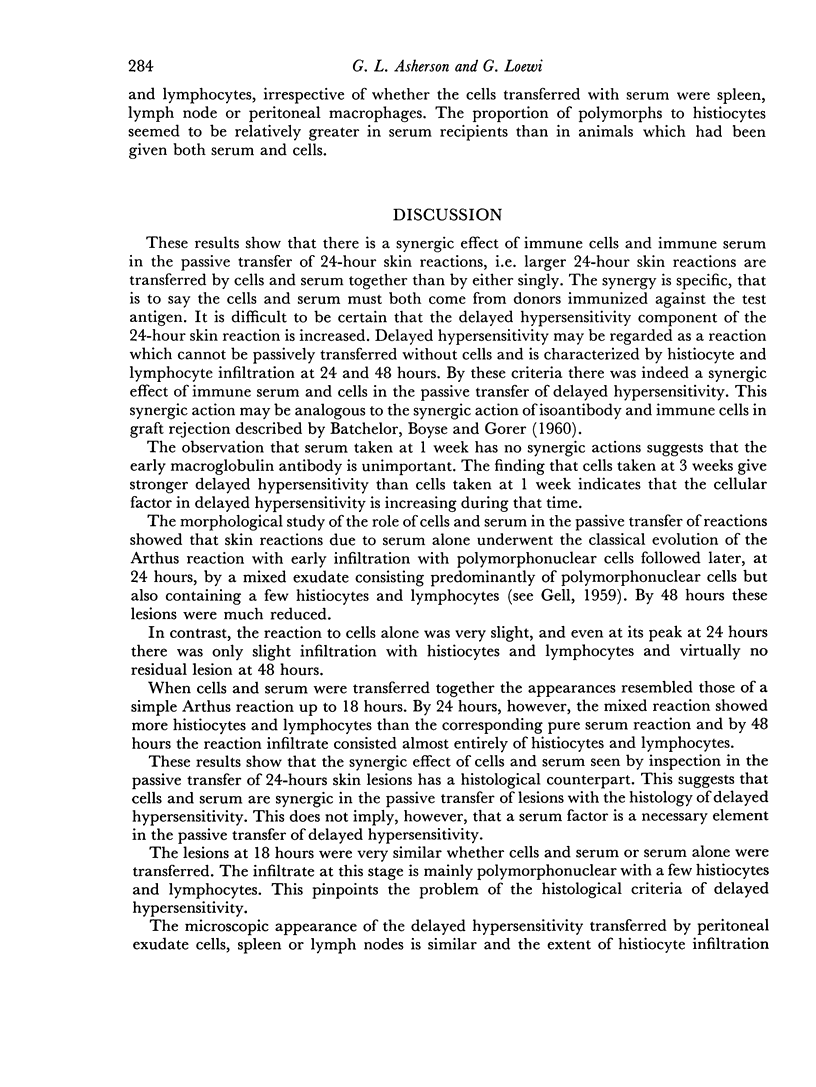
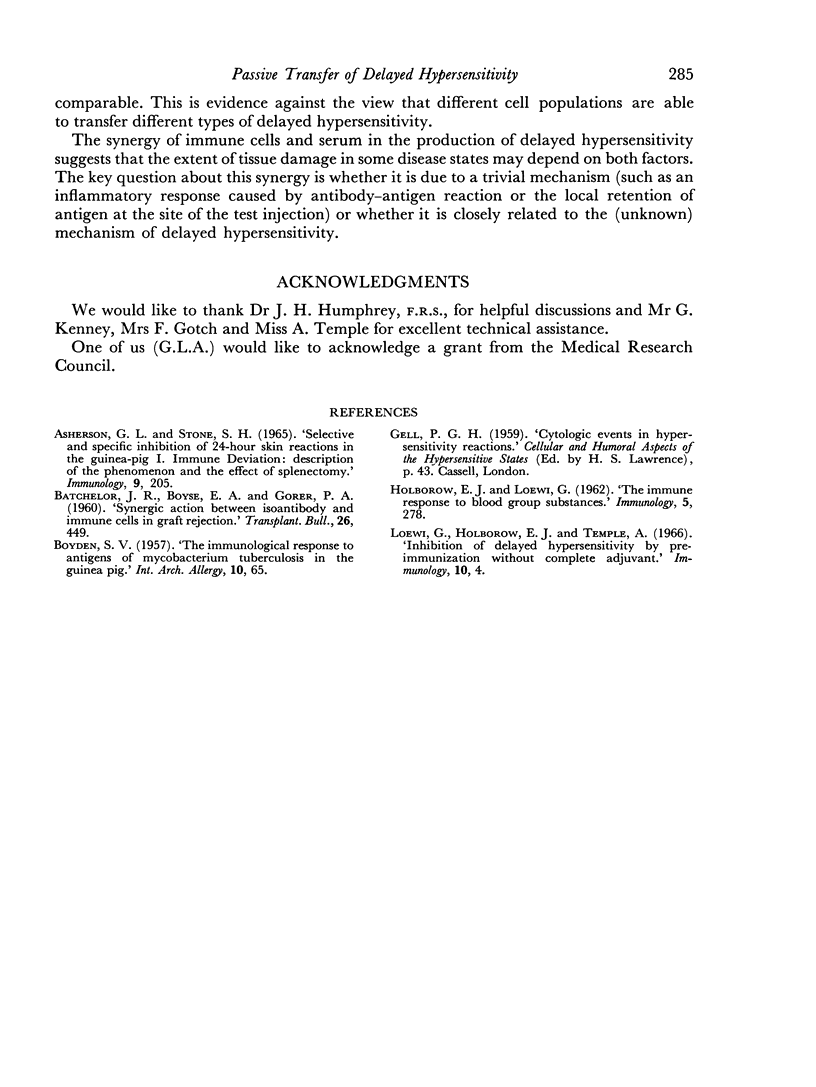
Images in this article
Selected References
These references are in PubMed. This may not be the complete list of references from this article.
- Asherson G. L., Stone S. H. Selective and specific inhibition of 24 hour skin reactions in the guinea-pig. I. Immune deviation: description of the phenomenon and the effect of splenectomy. Immunology. 1965 Sep;9(3):205–217. [PMC free article] [PubMed] [Google Scholar]
- BATCHELOR J. R., BOYSE E. A., GORER P. A. Synergic action between isoantibody and immune cells in graft rejection. Transplant Bull. 1960 Oct;26:449–453. doi: 10.1097/00006534-196010000-00037. [DOI] [PubMed] [Google Scholar]
- BOYDEN S. V. The immunological response to antigens of Mycobacterium tuberculosis in the guinea-pig. Int Arch Allergy Appl Immunol. 1957;10(2):65–81. doi: 10.1159/000228366. [DOI] [PubMed] [Google Scholar]
- HOLBOROW E. J., LOEWI G. The immune response to bloodgroup substances. Immunology. 1962 Mar;5:278–286. [PMC free article] [PubMed] [Google Scholar]



